  |
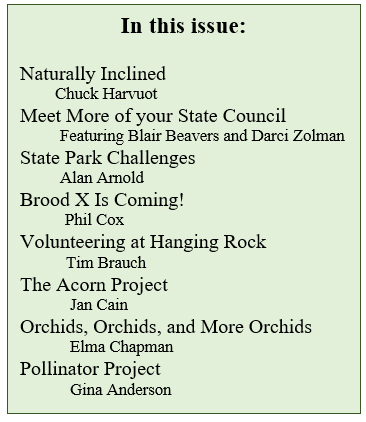
What names come to mind when you think about the early naturalists in our country? John Muir, Henry David Thoreau, Gene Stratton Porter, Aldo Leopold?
How about John Chapman? John who you ask? How about if I said Johnny Appleseed? Oh, that John Chapman. For many of us, the image that comes to mind when Johnny Appleseed is mentioned is of a barefooted man with a tin pot on his head picking apples from trees then walking around the countryside randomly scattering apple seeds, often with the help of animals from the forest. As is frequently the case with Disney cartoons, this portrayal of Johnny Appleseed is based more on folklore than fact.
While not as renowned as the others mentioned, John Chapman did play a part in the early naturalist movement. He was born on September 26, 1774 in Leominster, Massachusetts, the second of twelve children. Little is known of his early life, and in later years, it’s often difficult to distinguish between fact, folklore, and legend. As a young man he apprenticed at an apple orchard. Unlike today, apples at that time were rarely eaten. They were mainly used for cider, or dried and used to make apple butter. Many of the early pioneers were wary of drinking water due to the unclean water conditions in the countries they had left behind. They needed a beverage, and apple cider was an easy solution. (For those wanting an alcoholic substitute, hard cider could be as high as 66 proof.)
Chapman’s apprenticeship inspired him to become his own businessman. When he was in his twenties, he began travelling ahead of the settlers moving west, on the outer edge of American civilization, to plant cider apple nurseries—he didn’t “just scatter the seeds as he travelled” as depicted in the cartoon features. Today, there’s a difference of opinion as to which variety of apple he actually planted, but he would acquire a plot of land and establish a nursery for his trees. Then he would sell (or sometimes give away) seedlings to people moving into the area at an average price of 6½ cents each. He evidently didn’t like to stay in one place very long, so he would find a local partner to care for his nursery and sell trees, agree to split the profits with him at a later date, and then would move on to another location. Chapman supposedly owned apple nurseries in Pennsylvania, Ohio, Indiana, and Illinois. Each year, when he ran out of seeds to plant, he’d return to Pennsylvania or Massachusetts and get more seeds from cider presses. The seeds were free; the owners of the presses didn’t seem to mind having someone dig through the discarded pulp and collect seeds.
|

Some Native Americans thought Chapman was “touched by the Great Spirit,” and he chose to lead a frugal life. He was a vegetarian, usually barefooted, and often dressed in clothing discarded by others. He was well liked and believed in not harming anyone or anything (including venomous snakes and mosquitoes), He often slept outside and was a great storyteller, mostly about himself and his adventures. As a devout follower of Swedish Lutheran theologian Emanuel Swedenborg, he also preached The New Church gospel as he travelled.
John Chapman died near Fort Wayne, IN, in March of 1845 from exposure. There is some disagreement as to both the date of his death, (the 18th or 22nd), and his grave site: two different locations in Fort Wayne maintain grave markers for him. He never married, believing he would find his mate in heaven. When he died, he owned 1,200 acres of apple nurseries. After his death, his legend continued to grow. There are two museums in his honor, and in 1966 the US Postal Service issued a 5-cent stamp commemorating him. In addition, the Fort Wayne Tin Caps are named in his honor, although it was more likely that he wore a hat, rather than a tin pot, on his head.
So, next time you take a sip of apple cider, think of one of the early naturalists, John Chapman.
Your IMN Council President,
|

Meet your IMN State Council
In the winter edition we featured our state council members, but since then we have added two more, so here’s their introduction:
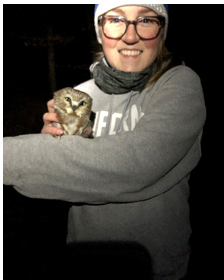
My name is Blair Beavers. I am the education coordinator and assistant director for the Johnson County Soil & Water Conservation District. I graduated from Indiana University's School of Public & Environmental Affairs with a degree in Environmental Management in 2015. Immediately after college I worked for Bloomington Parks & Recreation as a Natural Resource Education Specialist. I began working at Johnson County SWCD in 2017. Our district became an IMN host for the Franklin area in 2018 and has continued to hold the class annually. In addition to hosting IMN, I recently became chair of the Johnson County Native Plant Partnership, which focuses on reducing the impacts of invasive species and promoting the use of native plant species in landscaping. To further that mission, our district was recently funded by the Indiana Native Plant Society's Biodiversity Grant to begin the Little Native Seed Library Trail. The trail will use Little Free Library boxes to educate on native landscaping, give away native seed packets, and showcase seven different native plant habitats across Johnson County. The trail will be open May 1 to Oct. 31 starting this year.
|

Darci Zolman has been the program administrator for the Kosciusko County Soil and Water Conservation District for more than 30 years. She has a bachelor’s degree from Purdue University in agronomy, which in her occupation allows her to bridge the gap between her training in agriculture and her love for the environment. Part of her time is spent doing classroom, field and stream programs for students and adults, with a focus on resources in the local community and conservation how-tos. She also helped develop the Tippecanoe River Expedition, a natural resource-themed raft program for high school students, and has been actively leading these trips for more than 25 years. She is a facilitator for Project WET, Project WILD, Project Learning Tree and Hoosier Riverwatch. She is currently vice president of the Environmental Education Association of Indiana and past president of Indiana Envirothon, continuing to serve as its test committee chair. Darci was encouraged to start an IMN program by a group of local IMNs who had taken the training in other counties. She convinced her SWCD board that this would be a valuable program to sponsor and they readily agreed. Her local IMNs became her amazing advisory committee and it has worked out well. The Kosciusko program was named the IMN Host of the Year last year and will conduct its sixth annual program in 2021. In her spare time, she enjoys hiking, birding, and kayaking. She looks forward to being a part of the IMN Council.
|
State Park Challenges
by Alan Arnold, AIMN
Last summer my family spent a week at Lake James. While there, I noticed Pokagon State Park had a Hell’s Point Challenge, an 8-mile hike over various trails and to Hell’s Point. My daughter and I completed that. |
|
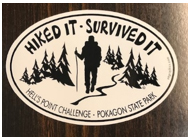 |

Soon after, I saw in the newspaper that Chain O’Lakes State Park had a challenge where you paddled the nine lakes. I then completed that. Later, I saw Jody Heaston of the DNR, and she informed me that there were several other challenges. I looked them up on the website and saw that there were six others listed. She also told me that Fort Harrison Friends had a challenge with their park so, I made a goal to complete all the “Challenges” in 2020. I went to Indiana Dunes State Park and completed the 3-Dunes Challenge, the trail challenges at Spring Mill State Park and Fort Harrison, the 7-Vista Challenge at Brown County, the 5-mile Trail Challenge at Turkey Run, the Six Ravine Challenge at Shades, and finally the Three Falls Challenge at Clifty Falls.
|
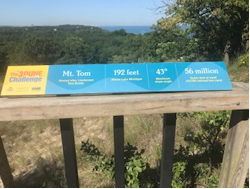
All of these challenges were really fun. The most challenging was the ravines at Shades State Park.
The 7-Vista Challenge at Brown County is a drive thru challenge. The Three Dune Challenge is quite strenuous but very scenic. After completing these challenges, you are given an opportunity to purchase a sticker, T-shirt or other challenge items. If you want the satisfaction of conquering the challenges, get out there and do some hiking, paddling or driving. Info at dnr.IN.gov/state-parks/programs/fitness.
|
They are back - Brood X Returns to Indiana!
by Phil Cox, IMN council member
The Brood X is coming, the Brood X is coming! No, I’m not Paul Revere, and Brood X are not the British, but they are periodical cicadas, and they are coming by land. Brood X are 17-year cicadas, and 2004 was their last big emergence. Periodical cicada populations emerging within a geographic range are called a brood and “X” stands for the Roman numeral 10. This is because broods are numbered sequentially using Roman numerals. Charles Marlatt, an American entomologist, first described this grouping system in 1898. Today there are 15 active recognized periodical cicada broods in the United States. Magicicada is the genus of the 13-year and 17-year periodical cicadas of eastern North America, with five of those species having been reported in Indiana. Brood X is composed of three species — M. septendecim, M. cassini and M. septendecula.
The 15 different brood ranges fit together like a puzzle, and Brood X, nicknamed “The Great Eastern Brood”, will emerge in 15 states and Washington D.C. from Illinois to the Atlantic coast. In Indiana, we can expect to have more cicadas emerging than most states, with the whole state being considered in the range of Brood X. There are seven counties (Cass, Crawford, Jasper, LaGrange, Newton, Wabash, and Whitley) that the U.S. Forest Service doesn’t include in its “Active Cicada Broods of the United States” (May 2013) map for Brood X. Of course, cicadas don’t know county boundaries, but they do know where trees are, so just about any area that had woodlands in 2004 or before (and especially if the woodlands are still there) are prime habitat for Brood X. So, if you saw cicadas in 2004, and the habitat hasn’t been altered too much, you can count on them being back in the same area this year. It is predicated that southern and central Indiana will have the most cicadas, whereas the more open northern landscape will have fewer. Hopefully, citizen scientists can help determine any changes for the 2021 Brood X emergence boundaries.

Picture left: 17-year cicadas are about 1-1/2 to 2 inches long and have much brighter colors than their annual cousins. They can be recognized by their bright red eyes, black bodies, and orange wing veins. Check out this video to see the full life cycle and hear what a chorus of cicadas sounds like. Image by John Obermeyer, Purdue Entomology, Purdue University.
Some cicadas are observed annually. Last year, you may have seen annual cicada species, sometimes nicknamed “dog-day cicadas”, that emerge every year through unsynchronized life cycles that last from one to nine or more years; or a different periodical cicada brood. These may have even been “straggler” periodical cicadas that are just out of sync with their brood. Periodical cicadas’ strategy of long lifecycles and emerging en masse is called predator satiation, since predators are sated when they have had all the cicadas that they can gorge. This strategy leaves plenty left to go about their business of reproducing after predators have had their fill.
As I write this article in mid-March, Brood X has been in the soil up to 2 feet deep feeding on the sap of deciduous tree roots (primarily) for the last 17 years. When the top 8 inches of the soil reaches a steady temperature of 64 degrees Fahrenheit, the final nymphal instar will construct an exit tunnel to the surface and emerge. In Indiana, this usually starts sometime in May depending on how warm April temperatures are. For fun, you might want to try the cicada emergence calculator at cicadamania.com/cicadas/cicada-emergence-formula. After emergence, they find the nearest vegetation or object to climb up and shed their skins for the last time and emerge as winged adults. The remaining exoskeletons are a favorite for young naturalists to collect. Plan on having a large container for these collections, as emerging cicadas could be millions per acre in some hot spots.
Courtship begins with the males “singing” via specialized abdominal membranes called tymbals. Tymbals vibrate very quickly when pulled by tiny muscles. Once fertilization occurs, the male dies and the female flies to trees to lay eggs in tree branches that are about 3/16 inch and ½ inch in diameter, then she dies, too. Some of the squeamish may be afraid of cicadas, but for the most part they are harmless as neither sex bites, stings, or eats vegetation. However, while laying eggs cicadas do injure trees, as females have a sharp knife-like organ that acts like a sewing machine that can “stitch” 400 to 600 eggs each into the small twigs. These egg-laden twigs will die, turn brown, and break, resulting in what is called “flagging”. The females are not too particular about what tree species they lay their eggs in, as more than 200 species have been reported, including some favorites like oak, hickory, maple, flowering fruit trees, and grapes. Large mature trees can handle this “natural pruning”, whereas small young trees might lose many small branches and die or be set back a year under heavy pressure.
There are a few things that can be done to help manage tree damage. The first is not to plant in years that periodical cicadas will be emerging or at least wait until after the females are finished laying eggs. However, if you have already ordered and maybe even received seedlings for conservation plantings, that advice is too late. For future planning, please see extension.entm.purdue.edu/publications/E-47/E-47.html. This publication, by Cliff Sadof, Purdue Extension Entomologist, details where and when the other six Indiana periodical cicada broods will emerge.
Lenny Farley, Purdue Sustaining Hardwood Extension Specialist, asked foresters what they had observed in prior periodical cicada emergence years. “They all indicated that the newly planted seedlings were impacted significantly by the egg depositing activities of the cicadas, but those same seedlings were able to recover and produce successful tree plantings. Many deciduous species are able to re-sprout from roots or lower stems after damage to the stem,” Farley said. He also said dieback of the damaged stems is an additional stress on plants, so measures to support the growth of these seedlings can improve their potential to recover. Small trees and shrubs can be protected from female egg-laying activity by covering them with no larger than ½-inch mesh netting while cicadas are present. This needs to be done before or right when the males start “singing”. If there is damage, delay pruning until the cicadas are gone; then prune and discard the damaged egg-laden twigs before the eggs hatch (in approximately six weeks) and the first nymphal instar drops into the soil to start the 17-year cycle again. There are also insecticides that will help control cicadas somewhat, but applications must be very frequent. Netting reduces injury by over 95%, while insecticides only reduce injury by 75%. In addition, using insecticides is usually costlier and kills beneficial insects. Therefore, using insecticides is usually reserved for commercial orchard operations.
Brood X is not all gloom and doom. More adventurous naturalists may want to try cicadas in recipes like El Chirpo tacos or cicada stir-fry, found in “CICADA-LICIOUS: Cooking and Enjoying Periodical Cicadas” at tullabs.com/cicadaworld/cicadarecipes.pdf. I’m sure an internet search will find many fun cicada activities for young and old alike. Please consider participating in cicada citizen science by joining Cicada Safari to help map the 2021 emergence of Brood X. Simply download the free app from the Apple app store or Google Play, then go on a safari to find periodical cicadas. Lastly, the best way to keep up to date with this phenomenon is to sign up for the Purdue Entomology Cicada Newsletter or follow Purdue Entomology on Twitter or Facebook. Updates about the emergence timeline, management recommendations, community science programs, crafts for kids, and more will be shared. Let’s all try to have as much fun with this as possible, as Brood X won’t be back again until 2038.
|
Volunteering at Hanging Rock
by Tim Brauch, AIMN
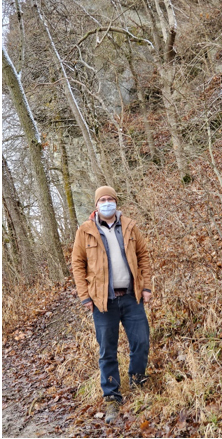
As Indiana Master Naturalists, we spend a lot of time in nature. Indiana has some great state parks, lakes, and reservoirs, but those are not the only options. City and county parks can provide a nice getaway, and private organizations also have nice properties, such as ACRES Land Trust in northeast Indiana.
ACRES Land Trust is Indiana’s oldest and largest land trust, started in 1960. To date, the organization protects more than 7,000 acres of land on 117 properties in northeast Indiana, northwest Ohio, and southern Michigan. More than 50 of these properties have trails that are open to the public. If I am not at a state park property, I am likely hiking, picking up litter, or clearing the trails at an ACRES property.
One property that I spend a lot of time at is Hanging Rock National Natural Landmark in Lagro, near the confluence of the Salamonie and Wabash rivers, just a few miles from Salamonie State Forest. ACRES took control of the property in 2009 but has been involved in property since 1958, two years before ACRES was officially incorporated. The history of Hanging Rock is much older than that, however.
Towering more than 80 feet above the farm fields and floodplains that surround it, Hanging Rock is a great place for scenic views. While much of northern Indiana was flattened during the Wisconsin and Illinoian glacial stages, this rock persisted.
Hanging Rock was formed 400 million years ago as remnants of shelled sea creatures that inhabited the Wabash Reef. These remnants were covered in mud. The glaciers churned this sea floor debris, mud, and mess, compressing some of the mud into rock layers and stripping off the softer layers. Hanging Rock was born, but likely remained hidden for millions of years.
Then, 13,000 years ago, the Maumee Torrent ripped across Indiana, carving through whatever was left as the glaciers retreated. Much of the coral reef immediately around Hanging Rock was washed away. However, the hard dolomite layers around the limestone survived. Erosion keeps wearing away at the rock today.
Hanging Rock is more than its geology. It has served as a waypoint in the Wabash River for centuries. The Miami people inhabited this part of Indiana and they have a legend about Hanging Rock. There are a few versions of the legend with variations in the minor details, but this is my favorite: Wy-nu-sa was a Miami maiden. She was in love with two brave warriors and could not make up her mind which one to marry. The two warriors decided to fight to the death atop Hanging Rock. The winner would win the hand of Wy-nu-sa. One foggy October evening, they met for the battle. As the fight dragged on, one of the warriors stumbled and fell to his death. It was at that moment that Wy-nu-sa realized who her true love was, the warrior who had just fallen to his death. She was overcome with grief and leaped to her own death, reaching out for the hand of her lover. The victorious warrior, realizing he had killed his friend and his lover had taken her own life, also made the leap onto the rocks below.
The spot is also popular with anglers. Some of them tell stories of seeing ghostly images jumping from the rock on foggy or dreary days. Other locals say that if you and your soulmate go to Hanging Rock together on a foggy day, you can hear the cries of Wy-nu-sa and see her ghost jumping off the rock again.
Tim Brauch is chair of the Bittinger Department of Mathematics and Computer Science at Manchester University. He completed his IMN courses at Mounds State Park in May 2019.
|
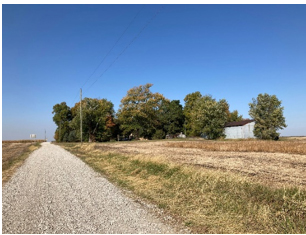
The Acorn Project
by Jan Cain, AIMN
We can all agree that 2020 was a radically different year than we had envisioned. All our goals and plans for the New Year quickly vanished by the middle of March. That is when I began my sheltering in place and working from home (until my retirement in May).
When making retirement plans for this summer, I had intended to immerse myself in volunteering at Shades and Prophetstown State Parks and NICHES and Nature Conservancy properties. My hopes were to find a volunteer project or projects to fulfill my hours needed for the Advanced Indiana Master Naturalist Certification. Hopefully I can proceed with those plans in 2021.
|
 |
|
Jody Heaston, DNR’s volunteer and master naturalist coordinator, has been helpful throughout the pandemic sending out emails connecting volunteers with opportunities for distance education and hours. One such project was collecting acorns from one white oak tree in your local area for the White Oak Genetics and Tree Improvement Program, Department of Forestry and Natural Resources, University of Kentucky, research headed by Laura De Wald. Since we had dubbed our property “Windy Oaks” when we moved here 28 years ago, having several oak trees, it seemed like a perfect opportunity for me. No commute time. Easy social distancing. No mask required. Total Zen time each day circling a beautiful, stately oak tree looking for acorns. |
Things I learned from Laura De Wald in her instructions and further emails:
- Acorns needed to be brown, not green.
- The caps of the acorns need to come off with slight touch of finger or not have a cap on at all.
- Acorns dropped in water that floated are not viable because they will not grow, so I only kept those that sank to send to her.
- Once acorn weevil larvae leave the acorn they will not burrow into another acorn.
|
Things I learned on my own or from subsequent research:
- My particular oak tree is 102 inches in circumference. The height to the first branch is over 13 feet.
- Acorn weevils infest a lot of the acorns.
- Acorn weevils are looking for soil to burrow in to complete their life cycle.
- The viability rate is around 40% or less of those I collected (I was a bad citizen scientist and forgot to log the first three days).
- I need to pay closer attention to the small details in nature to really learn.
|
|
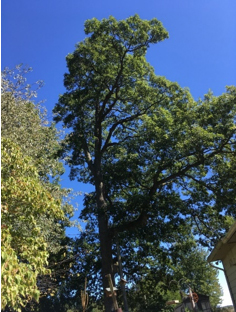 |
I noticed:
- Acorns from the same tree come in many shapes, sizes, and colors.
- Viable acorns come in many shapes and sizes.
- A single acorn can contain many colors.
- Some acorns have the larva of the acorn weevil in it just waiting to escape the box lid the acorn is drying in so it can scoot across the kitchen counter. (I cannot believe I did not take a picture of the larvae.)
I wonder:
- Does the size of acorn denote how successful the seedling will be?
- Why do acorns that are not brown drop from the tree?
- What causes one acorn to be viable and another not?
- Do squirrels and chipmunks eat or bury only viable acorns?
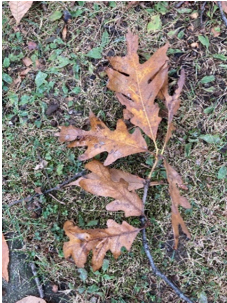
My time walking around this mighty oak – starting at the center next to it and walking around farther and farther each time until I get past its drip line and into the direction the wind might blow the acorns down – has been really good for me to slow down and connect with God, nature, and myself. The breeze and the sunshine feel more relevant to my skin. I notice the small things – the shiny, bright acorns, the brown leaves or the more colorful clusters of leaves, a beetle or fly that might go past while I’m walking, the songs of the birds in the trees and at my feeders, the butterflies in my garden zinnias.
|
After sending the package to the University of Kentucky project manager, I received the email that my collection looked great and she had already planted them. She said that my acorns were of great quality, which relieved my mind as the weevil situation worried me. I cannot wait until the spring to hear how my new crop of oaks are doing. See white-oak-genetics.ca.uky.edu/acorn-collection to learn more. |
|
 |
Orchids, Orchids, and more Orchids!
by Elma Chapman, IMN Council Member
Have you tried one of the AIMN virtual educational presentations yet? Jody announces them via email, you click on the link, and voilà—an entertaining hour or more of education about the natural world. I “attended” the orchid program and found it very worthwhile. When I checked the participants, it said there were 35 people at our “meeting.” The presentation was by Erica Forstater who is the environmental education program coordinator and Rinard Orchid Greenhouse assistant at Ball State University in Muncie. More information about the program is available at bsu.edu/orchids.
The orchid family is the second largest plant family in the world with 30,000 species. Rinard has a collection of 2,100 orchids and a total of 3,000 plants in three rooms, which are open to the public as a museum. The goal of the orchid greenhouse is conservation and education. The collection was started when an alumna of the university donated her orchid collection in 1970 and the greenhouse has grown since then. There is unfortunately illegal trade in rare orchid species, and the facility at BSU is one of the places authorized to accept plants confiscated by border inspectors.
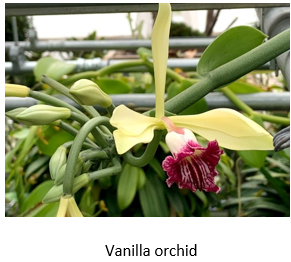
The first room in the greenhouse is the conservatory for tropical, non-orchid plants. Among other things, we learned that bananas do not grow on trees, but are the largest herbaceous flowering plant. Trees grow bark; bananas do not. The second room is the Warm House, kept at a temperature of around 75 - 80 degrees. In here, among many other orchids, you can see the only orchid grown commercially for food. I did not know that vanilla is a kind of orchid! The third room is the Cool House, kept at temperatures between 50 to 60 degrees. It's still very humid, but the plants in here are native to higher elevations, thus the cooler temperatures. For each of the rooms, Erica showed us several representative plants.
|

Most orchids are epiphytes. They don’t grow in soil, but rather their roots are exposed to the air. However, the 43 species of orchids that grow in Indiana —yes, we have 43 native orchids — are not epiphytic and do grow in soil, like the lady slipper orchid and putty root. Our native orchids can be found in forests, wetlands, prairies, and barrens, and they bloom from April through November, depending on the species.
The virtual program was interesting, fast-paced, and educational. There were ample opportunities to ask questions. The greenhouse in Muncie is open to the public Monday through Friday from 11 a.m. to 4 p.m. and has special programs on the second Saturday of each month. It would be a great place to visit to learn more and see these orchids for yourself, but if you can’t get there, this presentation is a great substitute. Jody did record this session, so if you’d like to see it, contact her, jheaston@dnr.IN.gov.
|
Join Mini-Pollinator Day on April 24
Mini-Pollinator Day will take place virtually on April 24 from 9 a.m. to 12:30 p.m. at sunnysidemg.org/pollinator-day. Webinars will start at 9 a.m. with Sunnyside Master Gardener and beekeeper Roger Thomas presenting “Beekeeping 101”. At 10 a.m. Amanda Thomsen, with Kiss My Aster, will present on “How to Create a Great Backyard”. At 11 a.m. Troy Durham, a local horticulturist, will present “Not Just Nectar: Pollinator Pointers for the Home Landscape”. At noon, the Sunnyside Master Gardeners will cover “Seed Saving”.
To round out the day at 12:15 p.m. we will be unveiling our citizen scientist project titled “Sunnyside IN Pollinator Project 2021”. We are excited to start this citizen science project on April 24 because it will allow everyone to contribute to our fall Pollinator Day where we will release the results of our citizen science project. No registration is needed to attend the webinars.
If you have any questions please contact the Purdue Extension Floyd County Office at 812-948-5470 or email ANR Extension Educator Gina Anderson at gmanders@purdue.edu
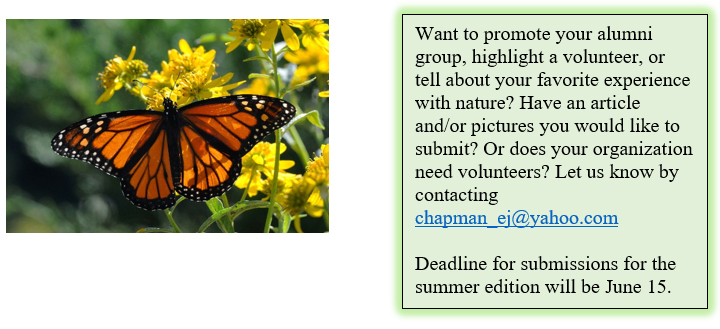 The Indiana Master Naturalist program is sponsored by the Resource Conservation & Development Councils, Indiana Soil & Water Conservation Districts, Purdue Cooperative Extension Service and Indiana Department of Natural Resources. More information is available at indianamasternaturalist.org.

|